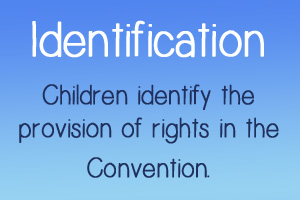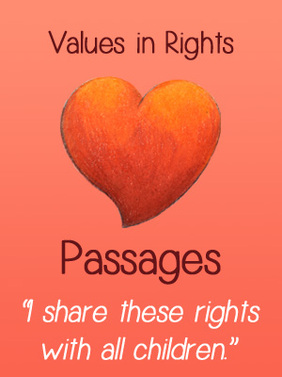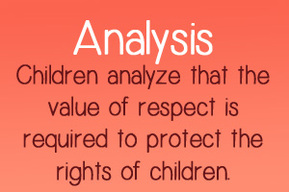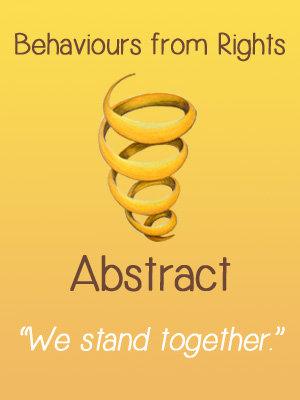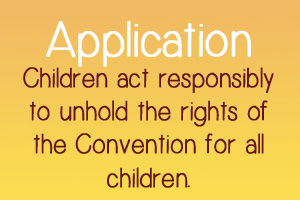The 3 Pedagogical Pillars of Children's Rights Education are based on the Montessori 3-Period-Lesson, which is a fundamental approach in the Montessori classroom used to introduce a new concept to children. Essentially, it is used to move a child from basic understanding to mastery.
In Children's Rights Education, the 3-Period Lesson is applied in the following way:
Period 1 - Identification of Rights (These are my rights...):
This is the concrete part of the curriculum where the child first identifies the rights entitled to him or her in the Convention on the Rights of the Child. The colour associated with Period 1 is blue.
Period 2 - Analysis of Rights (These rights I share with all children...):
The second period is the time to analyze the Convention's rights identified by the child in Period 1. In this period, the child analyzes the value of the rights in the Convention to self and others. The colour associated with Period 2 is red.
Period 3 - Application of Rights (This is how I stand with others for our rights...)
The third period is the point where the child acts to uphold the Convention's rights for all children. In doing so, the goal of Children's Rights Education is accomplished because a rights respecting culture is created that is reference to the Convention. The colour associated with this period is yellow.
A detailed progression of the 3-Period Lesson applied in Children's Rights Education:
In Children's Rights Education, the 3-Period Lesson is applied in the following way:
Period 1 - Identification of Rights (These are my rights...):
This is the concrete part of the curriculum where the child first identifies the rights entitled to him or her in the Convention on the Rights of the Child. The colour associated with Period 1 is blue.
Period 2 - Analysis of Rights (These rights I share with all children...):
The second period is the time to analyze the Convention's rights identified by the child in Period 1. In this period, the child analyzes the value of the rights in the Convention to self and others. The colour associated with Period 2 is red.
Period 3 - Application of Rights (This is how I stand with others for our rights...)
The third period is the point where the child acts to uphold the Convention's rights for all children. In doing so, the goal of Children's Rights Education is accomplished because a rights respecting culture is created that is reference to the Convention. The colour associated with this period is yellow.
A detailed progression of the 3-Period Lesson applied in Children's Rights Education:
|
Children acquire knowledge of their provision, protection, and participation rights as outlined in the United Nations Convention on the Rights of the Child.
These rights include:
|
Children acquire values of respect for children's rights when they become aware that they share the Convention's rights with all children globally.
These rights include:
|
Responsible behaviours guide children as they stand together to actively pursue the realization of the Convention's rights for all children.
These rights include:
|


